Teaching diamante? These seven-lined poems make diamond shapes. Instead of rhythm and rhyme, they focus on careful word choice. Kids select specific parts of speech that move the audience from one noun to its antonym.
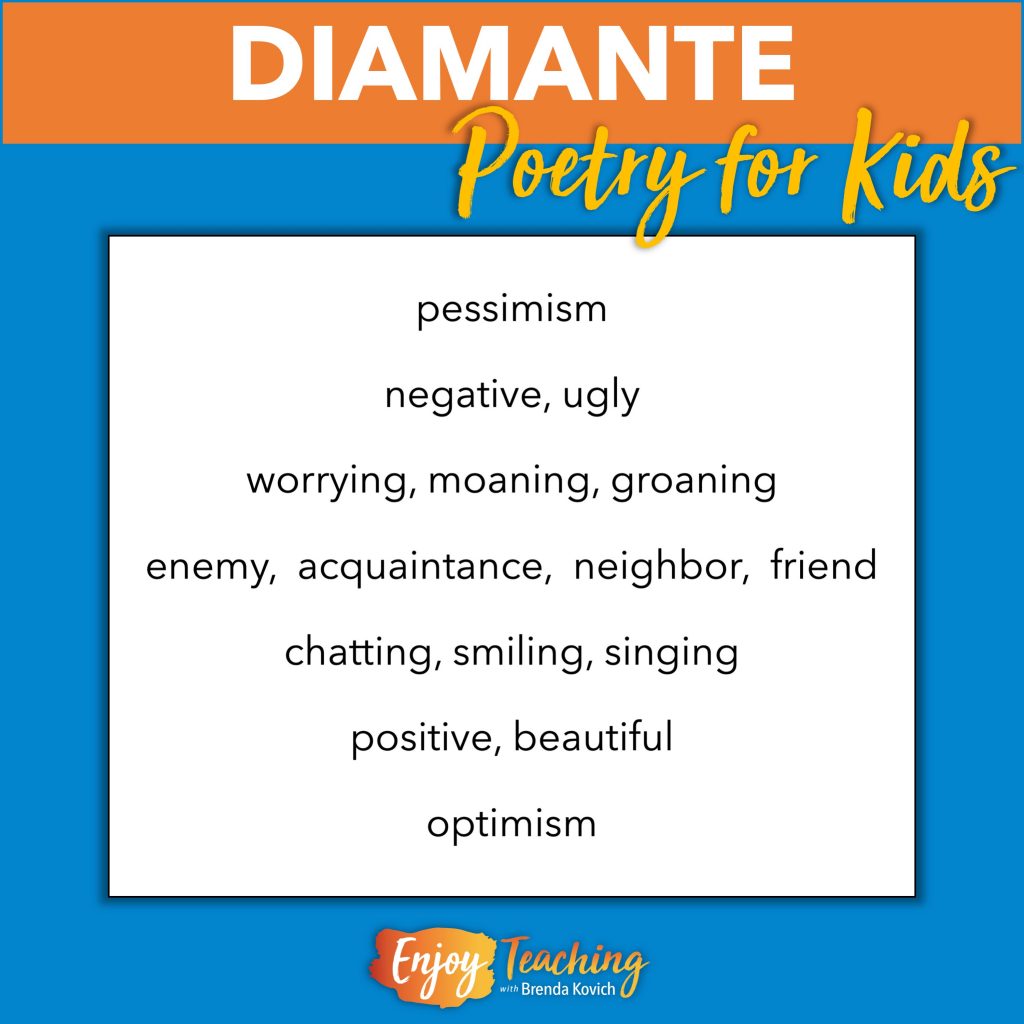
Ms. Sneed Plans for Teaching Diamante
Our favorite fourth grade teacher sat at the side table with her student teacher. “Diamante is the next type of poetry we’ll tackle,” she said. “For this genre, the elements of poetry are different,” she said. “Rather than working on rhythm and rhyme, kids focus on word choice.”
“Aren’t those poems diamond-shaped?” asked Mr. Grow.
“Yep. Let’s take a look at the learning progression.”
Providing an Example
Ms. Sneed pulled a folder from her teacher bag. Then she slid a page in front of Mr. Grow. “Take a look at this diamante,” she said.
pessimism
negative, ugly
worrying, moaning, groaning
enemy, acquaintance, neighbor, friend
chatting, smiling, singing
positive, beautiful
optimism
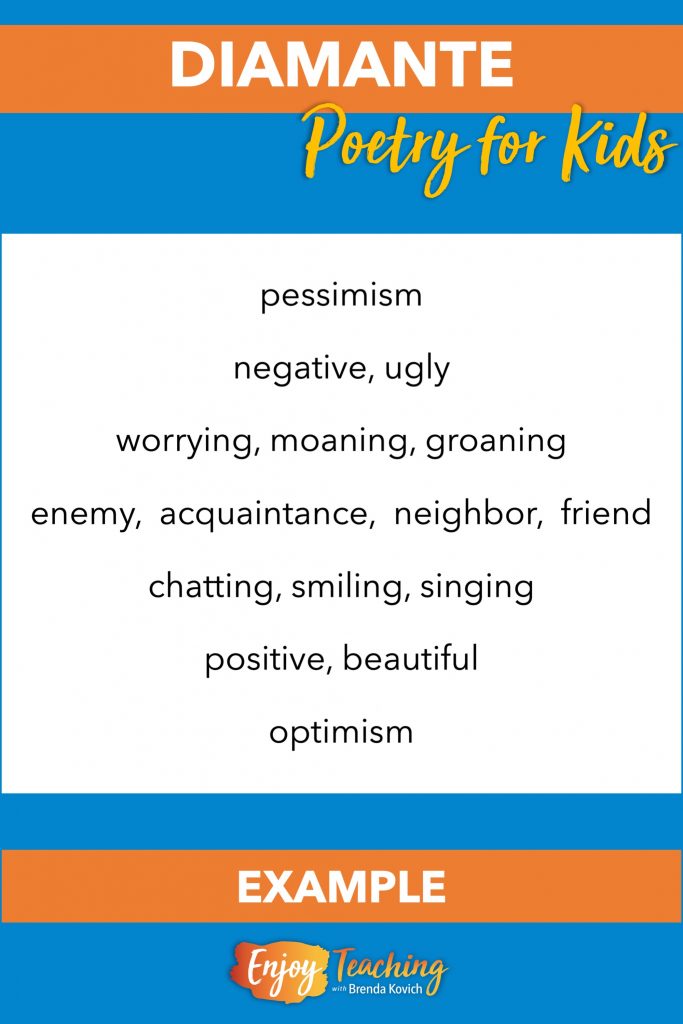
“I can see the diamond shape,” Mr. Grow said. “Additionally, I notice that it begins with a word then ends with its opposite. Please explain the structure.”
“In order to get the diamond shape,” Ms. Sneed said, “the lines, or verses, get longer. Then they get shorter.”
The Structure of Diamante
She pointed to the first verse. “First, students begin with a single noun. Here, it’s pessimism. Since they’ll end with an antonym, they select it too.”
“Optimism,” said Mr. Grow.
“Exactly. When you teach, you’ll help kids choose words that move them gradually from the noun to its opposite. As you can see, the poem doesn’t necessarily rhyme. And the rhythm comes only from the number of words per line.”
“How are the other words selected?” Mr. Grow asked.
“Let’s go through each line,” said his mentor.
“The first line, as we discussed, is composed on one noun.
“For the second line, kids select two adjectives. Both describe the noun in the first line.
“Then, students choose three verbs for the third line. They also go with the noun in line one. Traditionally, the verbs end in -ing. However, they may choose -ed for past tense – or no participle. For their first diamante, I suggest sticking with the -ing ending.
“The fourth line presents the largest challenge. In it, kids position four nouns with similar denotation but varying connotation. They begin with a noun closely associated with the noun at the top of the poem. Then they gradually alter connotation to finish with a noun that goes with the noun at the end of the poem.”
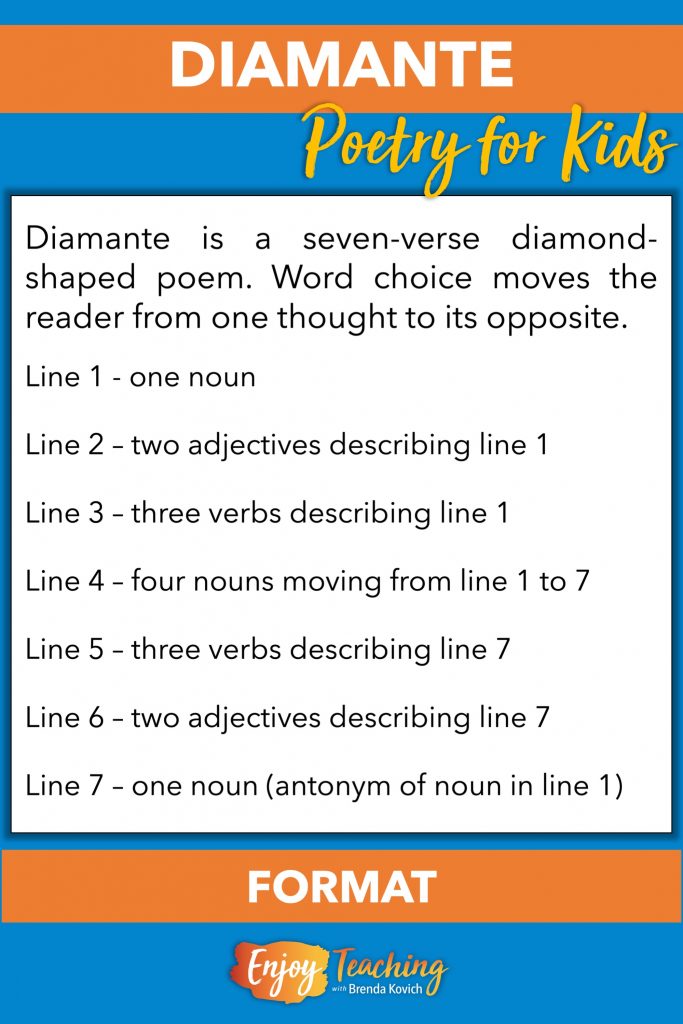
Mr. Grow looked puzzled. “Denotation? Connotation?”
“Don’t worry,” said Ms. Sneed, “well talk about that in a minute. First, we’ll finish discussing format.
“Like the third line, the fifth line consists of three -ing verbs. These, however, support the noun at the end of the diamante.
“Similarly, the sixth line mimics the second verse. Although it uses two adjectives, they describe the noun at the end.”
Discussing Denotation and Connotation
Next, Ms. Sneed pulled out another paper. “Actually,” she said, “connotation holds the key to writing successful diamante.”
Mr. Grow still looked unsure about teaching diamante, but his mentor continued. “Denotation means definition,” she said. “Here, you see five synonyms for the word warm: boiling, hot, lukewarm, mild, and tepid. Do they mean the exact same thing?”
Now Mr. Grow shook his head. “No, some are more extreme.”
“Right, intensity plays a big role in connotation, or a word’s implication. As a matter of fact, people may say that a word’s connotation is how that word feels. You know, how negative or positive it feels. For example, consider the synonyms drizzle and deluge.”
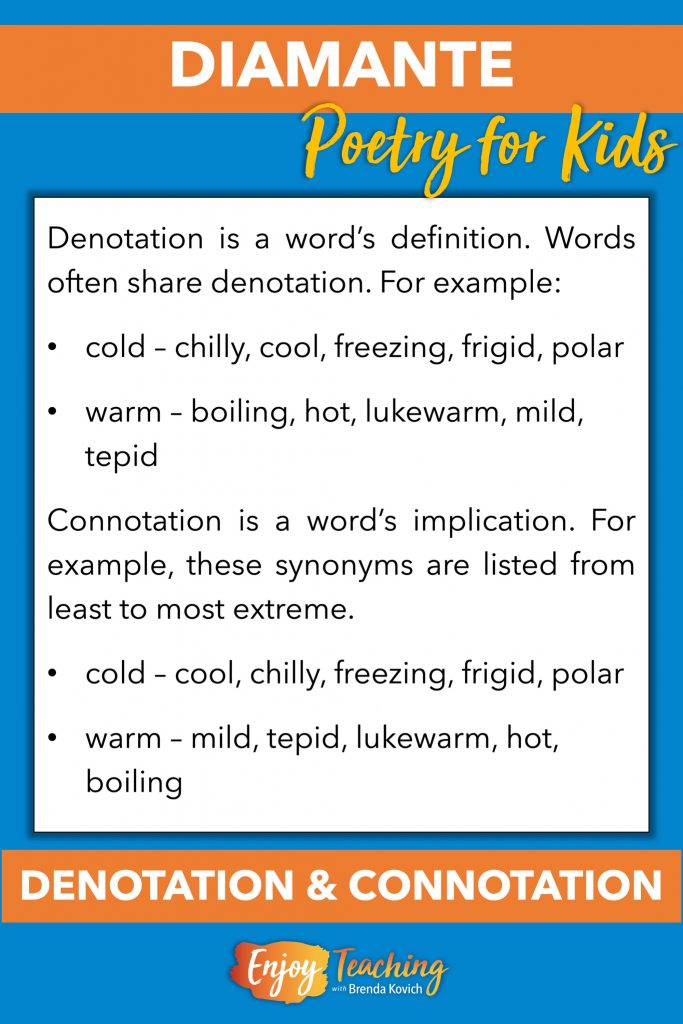
Mr. Grow grinned. “Now I get it. Although they’re both synonyms for rain, these words have totally different connotations.”
“Exactly.” Once again, she pointed to the paper. “If we order synonyms for warm from least to greatest, intensity, our list may be mild, tepid, lukewarm, hot, and boiling.”
Understanding Diamante
“So,” said Mr. Grow, “can we put this all together? Although I’m on my way to understanding, I’m not quite there yet.”
“Sure.” As she spoke, Ms. Sneed slid the sample poem between them.
“In a clever way, diamante poetry changes the reader’s mind. Very slowly, it moves them from one concept or point of view to another. That occurs when words are carefully selected for their connotation.”
She pulled a few highlighters and blue pen from her bag. “Here, let me show you.”

Beginning and Ending Diamante
First, she picked up a red highlighter. “The first noun in this poem has negative denotation and connotation.” She highlighted it.
“Similarly, all the words in lines two and three are negative.” As she spoke, she highlighted them in red too.
“However, the last word has positive connotation.” Ms. Sneed highlighted optimism with green. “Lines five and six, which support it, are positive.” Additionally, she highlighted those words in green.
The Key Is in the Middle
Then she pointed to the middle line. “In all diamante, the change occurs here. The first word in line four goes with the beginning of the poem.” She highlighted enemy in red. “But the last word goes with the end.” Next, she highlighted friend with green.
“These middle two words hold the key. Acquaintance has more positive connotation than enemy.” Now she highlighted that word in orange. “And neighbor is even more positive.” With a yellow highlighter, she shaded it.
Picking up her pen, Ms. Sneed drew a continuum beneath the fourth line. “See?” She put a negative sign on the left side and a positive sign on the right. “The words are ordered from most negative to most positive.”
“Negative to positive. I get it,” said Mr. Grow.
Ms. Sneed chuckled. “Not all the time,” she said. “It could be positive to negative. Or from less to greater intensity. Or vice-versa.”
Writing Diamante
Next, Ms. Sneed slid the final page toward Mr. Grow. “This blank diamante template guides kids in writing poems. In other words, it provides the basic structure. However, you will guide them with denotation, connotation, and word choice.”
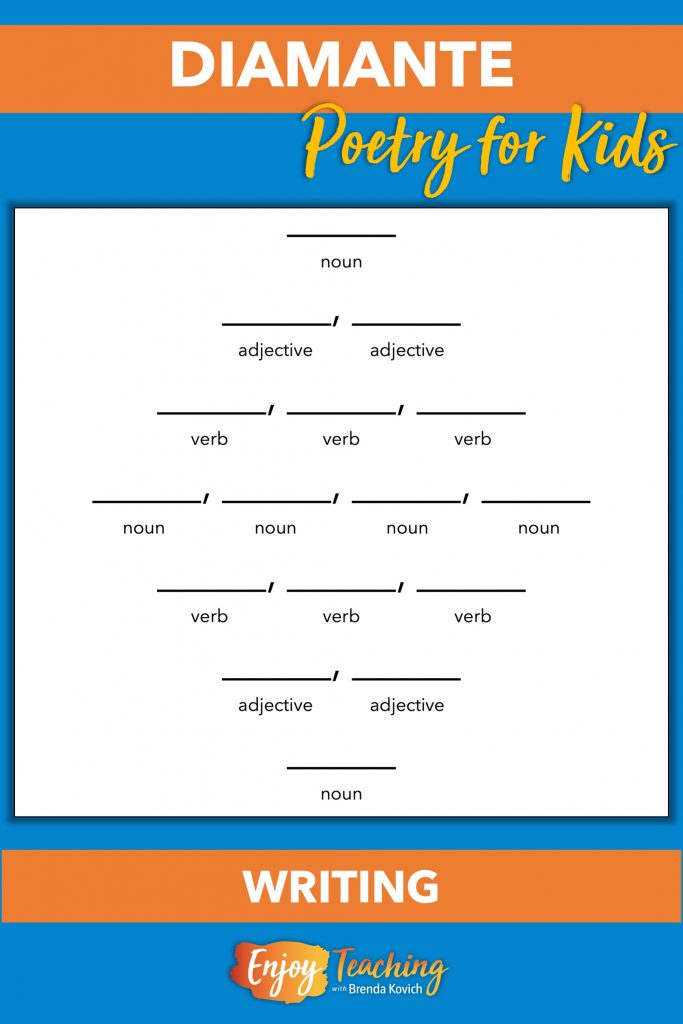
“Actually,” said Mr. Grow, “this template makes it much easier. In addition, this highlighted poem helps. Would you mind if I used the same process to teach diamante?”
Ms. Sneed blushed. “Of course! Furthermore, I’ll stay in the room during instruction. If you have any questions, just ask. I’m happy to support you.”
“Thanks,” said Mr. Grow. “When I get show-and-tell lesson planning from you, I feel so much more confident.”
Enjoy Teaching Diamante
As Ms. Sneed straightened up the materials, she imparted a few more words of wisdom. “Poetry activities like help kids choose specific words. This skill can be applied to all writing. Furthermore, they practice parts of speech. When I can hit multiple standards in one lesson, I enjoy teaching even more,” said Ms. Sneed. As she spoke, that slow teacher smile spread across her face.




